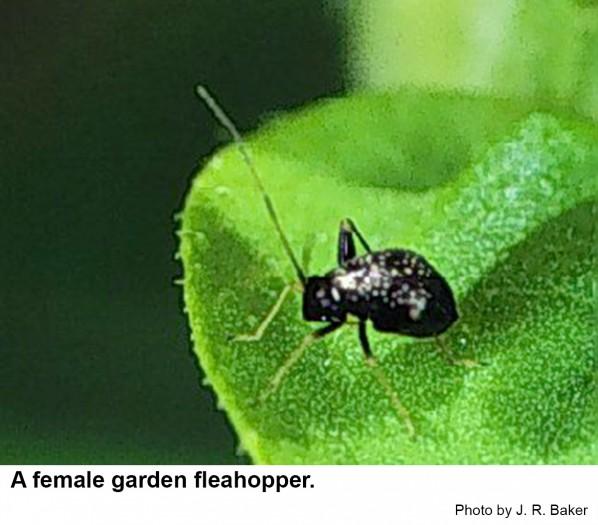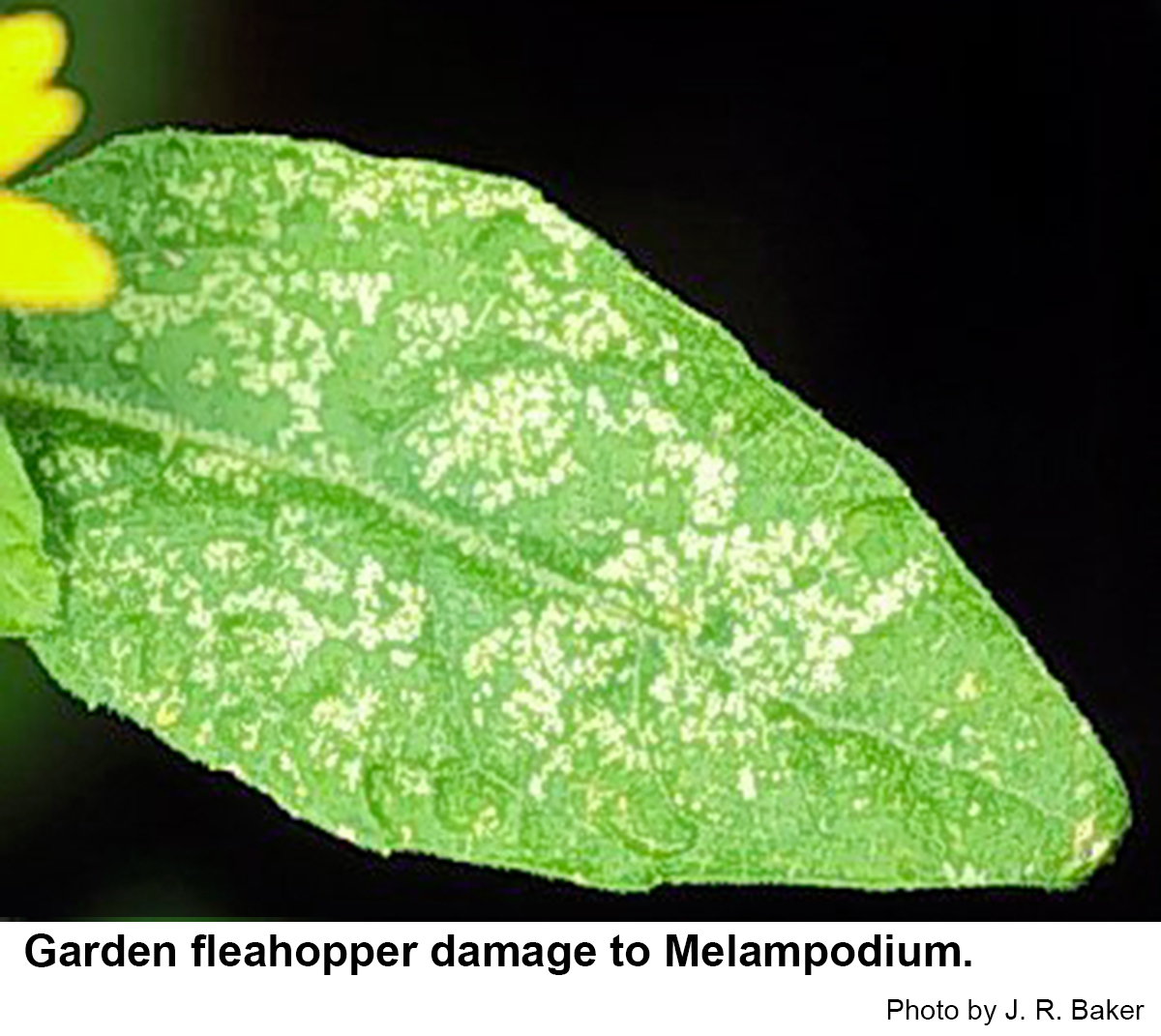Description and Biology
Garden fleahoppers, Microtechnites bractatus, are small plant bugs that feed on various garden plants and weeds. They are called fleahoppers because they seem to be about the size of fleas and they jump readily. Females may have very short wings or normal wings. Males all have normal wings. Garden fleahoppers overwinter as eggs laid from August through September. Each female lays about 100 eggs by inserting them into the stems or leaves so that just the tip of the egg is level with the plant surface. Nymphs hatch in early spring and feed on undersides of leaves. Newly hatched nymphs are pale green but become darker green with each molt. Nymphs feed and develop from 11 to 35 days before maturing. Adult fleahoppers live 1 to 3 months. We have at least 5 generations per year in North Carolina, and all stages can be found during the growing season.
Host Plants and Damage
Garden fleahoppers infest a wide range of ornamental, garden, and forage plants as well as many weeds and even grasses. Vegetable hosts include bean, beet, cabbage, celery, corn, cowpea, cucumber, eggplant, lettuce, pea, pepper, potato, pumpkin, squash, sweet potato, and tomato. Fleahoppers cause pale spots on the upper leaf surface and spots of excrement on the lower surface. Heavily infested leaves become chlorotic and may drop prematurely.
Residential Recommendation
Garden fleahoppers are plagued with parasitic wasps that kill the moving stages as well as their eggs. This may explain why garden fleahoppers vary in abundance. On ornamentals garden fleahopper infestations are typically sporadic so that one application of a pesticide may bring months or years of relief. Pyrethroids, Sevin, or Orthene should give adequate control of fleahoppers. When used as directed, pyrethroids are very toxic to insects but are not particularly hazardous to humans and pets (other than fish-avoid using pyrethroids around pools, ponds, and streams). Because eggs are deposited inside stems and leaves and thereby protected from insecticide sprays, a second application may be necessary 5–7 days after the first application.
References
- Common name: garden fleahopper, scientific name: Halticus bractatus (Say) (Insecta: Hemiptera: Miridae). Capinera, J. L. 1999. Featured Creatures, Entomology & Nematology, FDACS/DPI, EDIS. Pub. No. EENY-78.
- Garden Fleahopper, Halticus bractatus (Say) (Hemiptera: Miridae). Mead, F. W. 1973. Florida Dept. Agr. & Consumer Serv. Div. Plant Industry. Entomology Circular No. 137. 2 pp.
- Insect and related Pests of Flowers and Foliage Plants. Baker, J. R., ed. 1994. North Carolina Cooperative Extension Service Publication AG-136. 106 pp.
- Extension Plant Pathology Publications and Factsheets
- Horticultural Science Publications
- North Carolina Agricultural Chemicals Manual
For assistance with a specific problem, contact your local N.C. Cooperative Extension Center.
This Factsheet has not been peer reviewed.
Publication date: Nov. 14, 2013
Reviewed/Revised: Nov. 3, 2023
Recommendations for the use of agricultural chemicals are included in this publication as a convenience to the reader. The use of brand names and any mention or listing of commercial products or services in this publication does not imply endorsement by NC State University or N.C. A&T State University nor discrimination against similar products or services not mentioned. Individuals who use agricultural chemicals are responsible for ensuring that the intended use complies with current regulations and conforms to the product label. Be sure to obtain current information about usage regulations and examine a current product label before applying any chemical. For assistance, contact your local N.C. Cooperative Extension county center.
N.C. Cooperative Extension prohibits discrimination and harassment regardless of age, color, disability, family and marital status, gender identity, national origin, political beliefs, race, religion, sex (including pregnancy), sexual orientation and veteran status.



